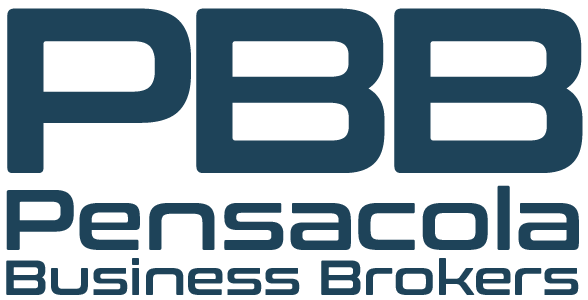Every business owner eventually asks this crucial question, whether they’re considering a sale, seeking investment, or simply want to understand their company’s financial position. Determining your business value isn’t just about satisfying curiosity—it’s about making informed decisions that can significantly impact your financial future.
Why Business Valuation Matters More Than You Think
Understanding your business value serves multiple purposes beyond a potential sale. It helps with strategic planning, securing financing, estate planning, and even partnership negotiations. Many owners are surprised to learn that most small business owners don’t know their company’s true value, which can lead to missed opportunities or poor financial decisions.
A proper business valuation also provides a reality check on your business performance and can highlight areas for improvement that directly impact value. Whether you’re planning to sell in five years or fifty, knowing your current value establishes a baseline for measuring growth and making strategic investments.
The Four-Step Approach to Valuing Your Business
Step 1: Calculate Your True Earnings
Start with what’s called Seller’s Discretionary Earnings (SDE), which shows your business’s earning potential under new ownership. This calculation begins with your pre-tax profit, then adds back:
- Your salary and benefits
- One-time or unusual expenses
- Personal expenses run through the business
- Excessive owner perks or family member salaries
This normalized earnings figure gives potential buyers (and you) a clearer picture of what the business actually generates.
Step 2: Determine Your Industry Multiple
Different industries command different valuation multiples based on factors like stability, growth potential, and market demand. Small businesses typically sell for 1-4 times their SDE, while larger companies might command higher multiples.
Key factors affecting your multiple include:
- Industry stability and growth prospects
- Business size and maturity
- Customer concentration and loyalty
- Owner dependency
- Market conditions and competition
Step 3: Assess Your Assets and Liabilities
Add up both tangible assets (equipment, inventory, real estate) and intangible assets (customer relationships, brand value, intellectual property). Don’t forget to subtract liabilities including debt, outstanding obligations, and potential future expenses.
Many owners underestimate their intangible assets, which can represent a significant portion of total business value. Your customer database, established processes, and market reputation all contribute to value beyond physical assets.
Step 4: Apply Market Reality Checks
Compare your preliminary valuation against recent sales of similar businesses in your industry and geographic area. This market-based approach helps ensure your valuation aligns with what buyers actually pay for comparable companies.
Common Valuation Methods Explained
The Earnings Multiplier Method
This straightforward approach multiplies your annual earnings by an industry-specific multiple. For example, if your business generates $100,000 in normalized earnings and your industry typically sells for 3x earnings, your estimated value would be $300,000. However, this is just a starting point—factors like location, customer base, and growth potential can significantly adjust this figure.
Income-Based Approaches
These methods focus on your business’s future earning potential rather than just current performance:
Discounted Cash Flow (DCF): Projects future earnings and adjusts for economic uncertainty to determine present value
Capitalization of Cash Flow: Assumes future performance will mirror past results, ideal for stable businesses
Market-Based Valuation
Similar to real estate comparisons, this method examines recent sales of comparable businesses to establish value ranges. This approach works particularly well for businesses in active markets with sufficient transaction data.
Asset-Based Methods
This approach values your business based on what it owns, including both tangible and intangible assets. It’s especially useful for asset-heavy businesses or those considering liquidation, providing a “floor value” for your company.
Red Flags That Hurt Your Valuation
Avoid these common mistakes that can significantly undervalue your business:
Over-relying on outdated rules of thumb: Industry multiples change with market conditions, so ensure you’re using current data.
Ignoring intangible assets: Brand value, customer relationships, and intellectual property often represent the majority of modern business value.
Overlooking liabilities: Unpaid debts, legal disputes, and deferred maintenance can substantially reduce your business value.
Using outdated financial statements: Valuations are snapshots in time—use current, accurate financial data aligned with your valuation date.
Emotional attachment: Overly optimistic projections based on emotional investment rather than market reality can lead to overvaluation.
When to Seek Professional Help
While you can estimate your business value using these methods, professional appraisers bring objectivity and expertise that’s often worth the investment. Consider professional valuation when:
- Preparing for a sale or acquisition
- Seeking significant financing or investment
- Planning estate transfers or succession
- Resolving partnership disputes
- Meeting legal or tax requirements
- Considering a business exit strategy
Professional valuators use multiple methods to triangulate accurate values and can identify value enhancement opportunities you might miss.
Maximizing Your Business Value
Understanding your current value is just the beginning. Focus on these areas to increase your business worth over time:
- Diversify your customer base to reduce concentration risk
- Document processes to reduce owner dependency
- Invest in systems and technology that improve efficiency
- Build strong management teams that can operate independently
- Maintain clean, accurate financial records
- Develop recurring revenue streams when possible
Taking Action on Your Valuation
Once you understand your business value, use this information strategically. If you’re planning to sell, identify areas for improvement that could increase value before going to market. If you’re keeping the business, use the valuation as a benchmark for measuring progress and making investment decisions.
Remember that business valuation is as much art as science—market conditions, timing, and buyer motivations all influence final sale prices. However, understanding the fundamental drivers of value puts you in a much stronger position whether you’re buying, selling, or simply planning for the future.
At Pensacola Business Brokers, we help business owners throughout Northwest Florida understand their company’s true value and develop strategies to maximize their return on investment. Whether you’re curious about current value or actively preparing for a sale, professional guidance can make the difference between a good outcome and a great one.

